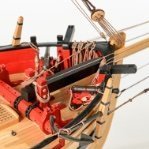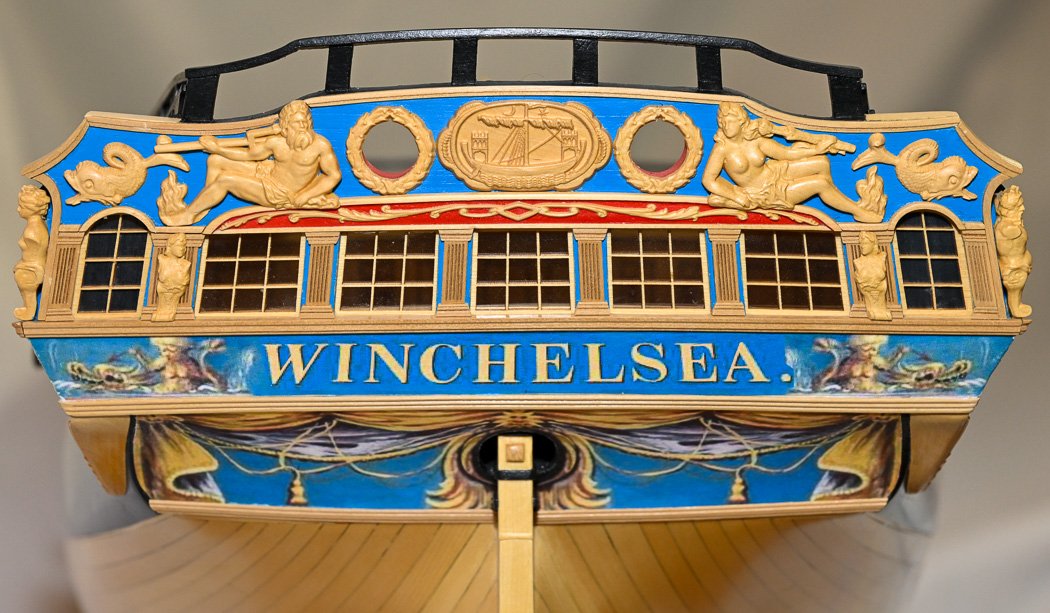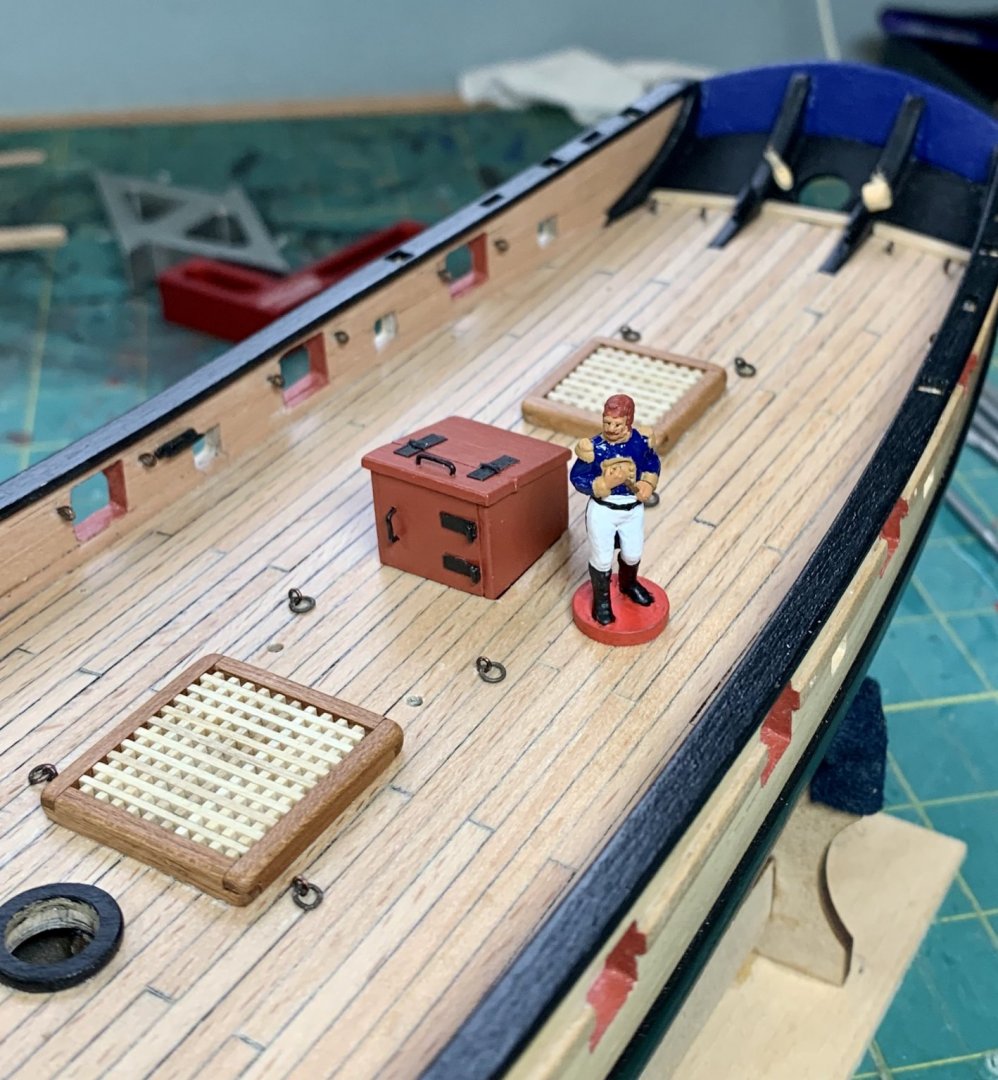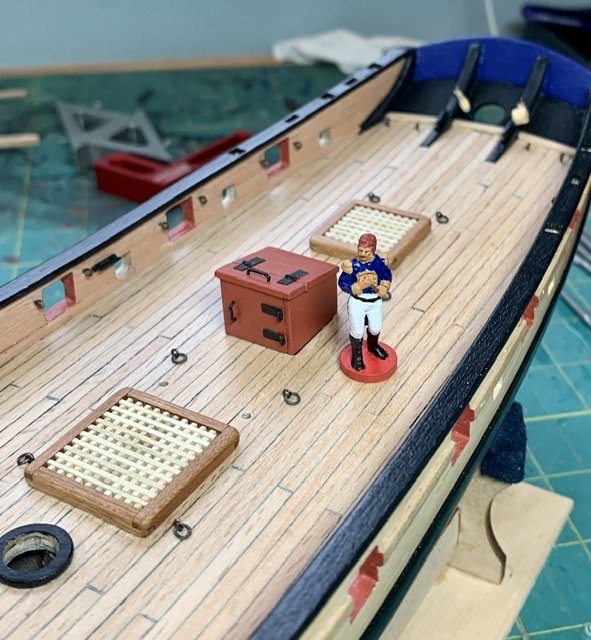-
Posts
4,107 -
Joined
-
Last visited
Content Type
Profiles
Forums
Gallery
Events
Everything posted by glbarlow
-

Basic but Good kit recommendations for granddaughter and I
glbarlow replied to glbarlow's topic in Wood ship model kits
I have two Midwest kits on hand and my own plan for working with her. We’ve built lots of magnet block works, STEM Towers and all kinds of art projects. My post was looking for kits, I have found those, so thanks and appreciation for those kit suggestions. -
Not a new topic I’m sure. I’m looking for a diagram of rigging the cat head (Cat falls) and the anchor? Any help appreciated. I have Lees book the diagram doesn’t show how the line runs and where both rope end terminate?
-
Good. I have no interest in sails and wouldn't want to absorb the extra cost. Making them an add-on option is good call. Those planking lines don't look very beginerish...
- 100 replies
-
- zulu
- vanguard models
-
(and 2 more)
Tagged with:
-
Lady Nelson is a basic cutter, but the principals and steps are the same as a more advance model, just less of it. There is also ample opportunity to kit bash it and build a better model than what comes with the kit. it’s very doable and a good start provided you’re willing to take the time and do the research on how to build models. However, I’d recommend Vanguard Models cutter Alert. It’s a bit simpler than Speedy, the big difference is clear detailed instructions, much better materials, and good plans. Better all around than Lady Nelson, but more cost though. I think the price difference is worth it for the instructions alone. I learned the most on my 2nd model by punching the Bob Hunt practicum and the AVS, Reed Virginia Schooner, but I’m not sure that’s available or if Hunt is still in business. It’s about what your style. Personally I’d be bored by a simple open boat and more likely to abandon that than spending the time learning new skills and having something to display when I’m done.
-
I order a packaged set of six (which look like Derek's photo) from Amazon then ordered the two barrettes as individual files also from Amazon.
- 725 replies
-
- vanguard models
- speedy
-
(and 1 more)
Tagged with:
-

Byrnes Sliding Table -Input Requested
glbarlow replied to glbarlow's topic in Modeling tools and Workshop Equipment
You will love the saw - the sliding table is new, but I've had the Byrnes saw for a number of years. It and the Byrnes sander are great tools -

Byrnes Sliding Table -Input Requested
glbarlow replied to glbarlow's topic in Modeling tools and Workshop Equipment
Thank you for commenting! -

Byrnes Sliding Table -Input Requested
glbarlow replied to glbarlow's topic in Modeling tools and Workshop Equipment
I think this thread has lost the plot. I now have the sliding table and was successful cutting lap joints for my hatches. I also used it it to scratch build a companion way. Now that I’ve used it, not sure how I ever did without it. Have fun with cutting stories, I’ll try not to cut anything other than wood 🙂 -
Thanks for the inspiration. I bought a set of 6 Vallorbe files, then also bought two of the barrette files (#1 & #2), so much better than the files I’ve had for years. I used them in making my hatch lap joints for my in-progress cutter. Their precision cutting really helped. Admiral Cochrane approves.
- 725 replies
-
- vanguard models
- speedy
-
(and 1 more)
Tagged with:
-
I’m envious of the boxwood planking. Your work and the boxwood make for a very good looking result. Yes Texas Glenn is all about the CA, it goes well with my general lack of patience. I do use PVA on a lot of the model for parts that I need to align, so I’m not a total fanatic. You're doing great!
- 725 replies
-
- vanguard models
- speedy
-
(and 1 more)
Tagged with:
-

Basic but Good kit recommendations for granddaughter and I
glbarlow replied to glbarlow's topic in Wood ship model kits
I think that's great, not sure the perfectionist in me would let me. I appreciate the thought, but the goal is for her to have something to take home once it's done. I also bid and won another Midwest model on eBay, the Sakonnet Day Sailer - because it has sails. These two should give us a good start. They look like good kits and were the most recommended in this thread. Again my thanks the forum. I'd never known or found Midwest Models without your collective input. Still keeping the other suggestions provided handy - if the first one is a big hit who knows, maybe my 3 year old grandson is next. -

Basic but Good kit recommendations for granddaughter and I
glbarlow replied to glbarlow's topic in Wood ship model kits
I found the Midwest Dingy on eBay for $24. It says it’s brand new. I like the size and all wood parts. For that price why not give it a try. I’ll let you all know. Thanks again for the great recommendations. -

Basic but Good kit recommendations for granddaughter and I
glbarlow replied to glbarlow's topic in Wood ship model kits
Thanks for the recommendations. I’ll look through these and any others that reply. id love to do the Vanguard model, but at 6 I’d end up doing most of the work. If it’s too simple, or to small it will be forgotten. The challenge is the balance. I appreciate all the specific model links. I’ll find something with all your help. I’ll also let you know what worked. -
My 6 year old granddaughter wants to build a ship with me. I’m trying to find a very basic ship we can do, but she does most the work. And that we can start and finish over the summer. Problem kits that basic seem mostly like junk. I’d like it to be something she’ll be proud of years from now and a fond memory of time with us together. It won’t be that if it’s junk or I have to do the work. Any recommendations appreciated...
About us
Modelshipworld - Advancing Ship Modeling through Research
SSL Secured
Your security is important for us so this Website is SSL-Secured
NRG Mailing Address
Nautical Research Guild
237 South Lincoln Street
Westmont IL, 60559-1917
Model Ship World ® and the MSW logo are Registered Trademarks, and belong to the Nautical Research Guild (United States Patent and Trademark Office: No. 6,929,264 & No. 6,929,274, registered Dec. 20, 2022)
Helpful Links
About the NRG
If you enjoy building ship models that are historically accurate as well as beautiful, then The Nautical Research Guild (NRG) is just right for you.
The Guild is a non-profit educational organization whose mission is to “Advance Ship Modeling Through Research”. We provide support to our members in their efforts to raise the quality of their model ships.
The Nautical Research Guild has published our world-renowned quarterly magazine, The Nautical Research Journal, since 1955. The pages of the Journal are full of articles by accomplished ship modelers who show you how they create those exquisite details on their models, and by maritime historians who show you the correct details to build. The Journal is available in both print and digital editions. Go to the NRG web site (www.thenrg.org) to download a complimentary digital copy of the Journal. The NRG also publishes plan sets, books and compilations of back issues of the Journal and the former Ships in Scale and Model Ship Builder magazines.





